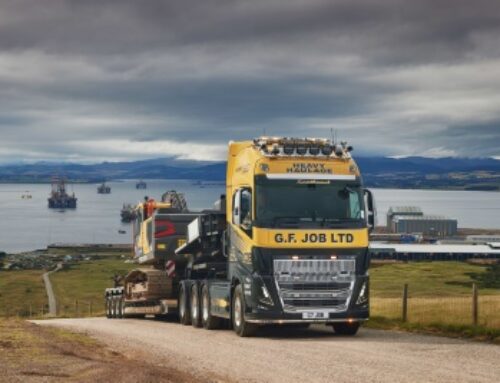DfT to boost weight limits for greener vehicles
 The Department for Transport has outlined forthcoming changes in the law that will increase the authorised weight limits for certain zero emission vehicles (ZEVs) and alternatively fuelled vehicles (AFVs), in a move designed to incentivise decarbonisation.
The Department for Transport has outlined forthcoming changes in the law that will increase the authorised weight limits for certain zero emission vehicles (ZEVs) and alternatively fuelled vehicles (AFVs), in a move designed to incentivise decarbonisation.
Explaining the changes, the roads minister Richard Holden said: “The use of ZEVs and AFVs can contribute to transport decarbonisation, as well as reduce emissions of air quality related pollutants.
“Currently, alternatively fuelled and zero emission HGVs may have heavier powertrain technology than traditionally fuelled internal combustion engine (ICE) HGVs.
“There are particular components in AFVs or ZEVs which are likely to be heavier than their equivalents in an ICE vehicle, most notably batteries, which are significantly heavier than a petrol or diesel fuel tank providing an equivalent vehicle range.
“Fuel tanks for pressurised gaseous fuels such as biomethane or hydrogen are also likely to be heavier than ICE equivalents, due to the need to reinforce these to cope with high pressure.”
The limit on gross vehicle weight currently varies depending on axle configuration. Under the existing regime of weight limits, the heavier powertrains on AFVs and ZEVs mean that the remaining capacity for cargo can be less than on comparable ICE vehicles.
The new rules, which are set to be considered by Parliament, will provide a two-tonne flat weight limit increase for certain ZEVs, and up to a one-tonne increase for AFVs. The slightly differing approaches to ZEVs and AFVs are designed to “provide the maximum possible incentive for ZEVs to be adopted,” the minister said.
According to a draft explanatory memorandum released late last month, the vehicle categories having their weight limits increased if they are ZEVs are:
- Articulated lorries and road train combinations with five or six axles whose conventional technology weight limit is 40 tonnes;
- Articulated lorries and road train combinations with four axles, normally limited to 36 or 38 tonnes;
- Two-axle motor vehicles (other than buses, which already have a higher limit), normally limited to 18 tonnes;
- Three-axle motor vehicles, normally limited to 25 to 26 tonnes; and
- Three-axle articulated buses, normally limited to 28 tonnes.
In the first two cases, an extra one-tonne allowance for AFVs will also be introduced. For the latter three cases, the one-tonne allowance for AVFs has been permitted already.
No additional weight allowance for either ZEVs or AFVs will apply over the existing maximum of 44 tonnes for artic and road train combinations, or of 32 tonnes for four-axle motor vehicles.
In addition, the maximum weight limits for individual axles will remain unchanged, a detail which has drawn criticism from Logistics UK.
Phil Lloyd, head of engineering policy at Logistics UK, said: “ZEVs traditionally are heavier, which due to the current weight limitations, results in a loss to the payload. The decision to increase the gross weight limit of an HGV to a flat two tonnes for certain ZEVs and up to one tonne for certain AFVs is a positive step forward.
“However, without a proportional increase in axle weights, the additional gross weight allowance will be unusable. While we are pleased to see government starting to address this issue, further steps need to be taken to ensure that the additional allowance can be applied effect, without compromising payload.
“Loss of payload is a significant consideration for our members, so it is vital that the sector avoids a situation which could result in more vehicles being needed to transport the same level of goods using ZEVs or AFVs and prices increasing for customers.
“The industry cannot move forward with the updated gross weight if the limitations are still set by the maximum axle weights. Logistics UK is focused on finding the right balance between reasonable range for ZEFs and AFVs, without compromising payload.”












